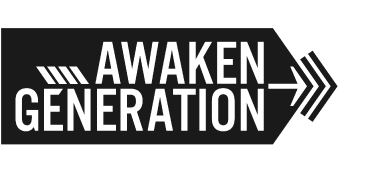Going Electric
I started learning the acoustic guitar in 2009 and started serving in cell group meetings, and gradually in a band. In 2013, I was intrigued by the tones of the electric guitar in the band I was in, and that was when I stepped into the world of the electric guitar.
But this world is pretty confusing. There are so many elements when it comes to learning electric guitar. From the range of colourful guitars to the galore of pedals, it was an intimidating new playground.
Not knowing what I wanted or needed, I actually splurged a large sum of money on many effect pedals. However, technique wise I was struggling badly.
There was only so much effect pedals and expensive guitars could do to help me. With this realisation, I began to work on my technique.
If you are currently an acoustic guitarist who wants to learn the electric guitar, or you are already learning electric guitar but struggling like I did, you are not alone!
I believe the struggle and overcoming hurdles are part of the process of breakthrough. Today, I will share three practical tips that have helped me to improve.
#1 Start with Power Chords and Triads
In the context of praise and worship, power chords and triads are important tools to have in your arsenal. They are extremely useful to support the band in rhythm and dynamics. Triads are also useful for hooks and lines.
The good thing about power chords and triads is that the shapes are movable across the fretboard. So once you are familiar with the shapes, you can use them for songs in any key.
Once you are familiar with the shapes, the next thing to do is to figure out different ways you can play chord progressions. Practising versatility on the fretboard would extend the tone and sound of your electric guitar.
For example, you can start with a simple 1 6 4 5 progression. Figure out how to play the same chord progression on different frets. You can also practice this with your favourite praise and worship songs.
These chords mostly involve only 3 strings, so they are not difficult to learn. This brings me to my next tip.
#2 Mute Your Strings
If you come from a background of playing acoustic guitar, one important thing to pay attention to is muting your strings.
Electric guitarists often don’t play all 6 strings when playing any form of chords, especially when you have lots of gain in your overdrive pedal. Playing all strings will cause the chord to sound muddy and messy. When playing fewer strings (with the unwanted strings muted), the chords sound much tighter and focused.
Experiment with your fingers, and figure out how to press the strings you need, and mute the strings that you don’t need.
#3 Take it Slow (Literally)
In other words, you don’t need to play 100 notes per second in order to serve in a worship band. If you are learning new scale patterns, start at a slow speed, say 60 BPM (or any tempo that gives you just enough of a challenge).
Focus on technique and accuracy. If you find there is consistency in your playing at that tempo, then increase the tempo little by little.
There is little meaning in trying to play fast if your tempo is messy and your notes inaccurate.
I hope this has given you three things to focus on during your practice time. Learning any instrument is a journey, and the electric guitar is no different. Trust me, the journey can be really fun so take your time, and explore sounds, tones and techniques that give you joy!
Benson Liang is the mentor of our new electric guitar stream. Benson started learning the acoustic guitar when he was 24. With a heart for those with special needs, he started playing the guitar at City Harvest Church’s JAMs ministry (Jesus For All Minds) in 2013. He now serves actively as the music director for the JAMs service. Benson has a Grade 5 in Trinity College’s Rock & Pop Electric Guitar. Since joining AG in 2020, he has been serving regularly at various AG events like the Revival Nights. Connect with Benson @jesinspirment
Our 2022 school applications are closing soon! Audition and apply now at https://www.awakengeneration.sg/school-eng and follow us on Instagram, Facebook, Telegram, or Tiktok for more updates.



